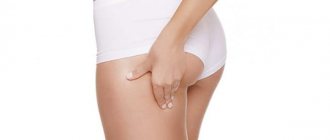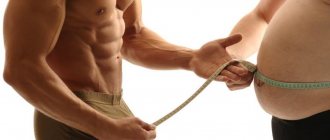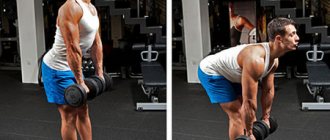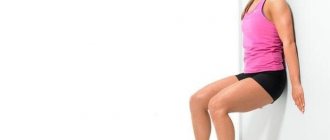Types of squats
The 30-day glute squat challenge can involve different types of squats. The final result of the training depends on what type of squats was chosen.
Below are the main types of squats and their characteristics:
- Classic squats are the simplest and most common. They are suitable for beginners. During the exercise, the back and front muscles of the thigh, back muscles, and the treasured gluteal muscle are evenly worked out. For correct execution: The feet are set at the width of the pelvis, while inhaling, the legs are bent at a right angle, as if you need to sit on a chair, and while exhaling, the starting position is assumed.
- The wide stance squat is a great workout for the quadriceps, glutes, and inner thigh muscles. Moreover, the deeper the squat, the better the buttock is worked out. Execution algorithm: Leg slightly wider than shoulder width. Squat depth until your thighs are parallel to the floor. Stay in this pose for 3-5 seconds. Slowly return to the starting position. The load can be increased with a barbell on the shoulders.
- Squats in a narrow stance will help to better shape the contour of the hips and work the buttocks. How to do it correctly: Your feet should be placed shoulder-width apart, but your toes should be spread apart. As you inhale, bend your legs at an angle of 90°. Fix the position for a couple of seconds and lift to the standard position.
These exercises are standard and are recommended by most instructors in fitness clubs as basic and universal. However, in order to develop an individually suitable program, you should pay attention to non-standard variations of squats.
Types of squats for the buttocks at home, to quickly increase your butt
Below you will find tips and recommendations on how to squat correctly to pump up a girl’s buttocks without the help of a trainer, even at home without exercise equipment. We have described the technique for performing each
Classic with own weight
The exercise primarily works the gluteus maximus, quadriceps femoris, and adductor muscles. When working with your own weight, the lumbar extensor and core are less loaded. Squats are the most important and difficult exercise in physical culture, so the body must be well prepared for it. You can do bodyweight squats right away by practicing proper technique, even if you're a beginner. But for proper preparation, you need to tone all the muscles, then after a while, you can move on to squats with a barbell. Therefore, bodyweight squats are good for understanding technique and toning muscles, but you won’t be able to build curves this way.
Deep
Deep squats, where the pelvis drops below parallel to the floor, forming an acute angle at the knees, best load the gluteus maximus and gluteus medius muscles. Also, during the load, the quadriceps, lower back, abs, and adductor muscles of the thigh are involved. It is a deep squat that can put more load on the buttocks, since they are the first to engage when the torso straightens. The range of movement also increases, which provides greater tension and effort in the muscles. To grow the buttocks, it is recommended to squat deeper than with the classic version. The exercise is performed provided that the ankles are flexible enough, otherwise a deep squat will not be possible due to the peculiarities of physiology.
With a narrow stance
This placement of the feet is set shoulder width apart, not too close, this will ensure a stable body position. The following muscles are involved: quadriceps femoris, gluteus maximus and medius, adductors, lower back and abdominal muscles. In this option, the gluteal muscles are optimally worked out. But it is necessary to take into account morphological features: length of the thigh, flexibility of the ankles, ligaments, length of the body. With individual characteristics, it can be difficult to implement this option. Therefore, you can place your feet a little wider, parallel, or slightly turn your toes out. Then the position will be more stable and the muscles will be properly loaded. The main thing is to squat until your thighs are horizontal.
Sumo
Sumo or wide squats include the gluteus maximus and medius, quadriceps femoris, adductor major and longus, and gracilis muscles. The wide position of the feet in this version provides a load on the adductor muscles of the thigh, working these groups more strongly than classic squats. This exercise should be part of a set of exercises, but should not be the only one and often repeated, as it noticeably increases the shape of the inner thigh.
Curtsy
The exercise is also known as cross lunges. The main part of the load is taken on by the gluteus maximus and medius, and the quadriceps muscles of the thigh. Additionally: hamstrings, abs, back, semitendinosus and semimembranosus muscles. Lunges are a great addition to squats in a leg program, and there are many variations of this exercise. An important condition for carrying out such a load is flexible joints. The exercise stretches the gluteal muscle well.
With dumbbells or kettlebell
The technique of squats with dumbbells remains the same as in classic squats with a barbell; the same muscles work. But the advantage of the exercise is that it does not subject the spine to compression. Vertebral injuries, displacements, osteochondrosis, intervertebral hernias are a contraindication to squats with weights on the shoulders. Therefore, this type of load will be a good alternative to a barbell.
Plie
An exercise with widely spread feet, similar to the ballet “Plie” technique, trains the gluteus maximus and gluteus medius, a group of adductor muscles of the thigh. The auxiliary muscles are: quadriceps femoris, lower leg, abdominal muscles. When performing this exercise, sufficient flexibility of the hip joint is necessary. The good thing about this exercise is that it doesn’t overload the quadriceps. But to grow the buttocks, you need an optimal load weight; you need to ensure concentrated movement through the gluteal muscles, without overloading the adductor hips.
Deep on one leg
The advantage of the pistol exercise is that it develops muscles well by working with your own weight. The exercise does not require additional equipment. But it is not so easy to learn, and a sufficiently trained person can perform it. The exercise works the quadriceps and gluteus maximus muscles. Only for the knee joints the exercise is quite traumatic. The acute angle of the knee receives a lot of stress and this is a contraindication for any problems and pain in the knees.
With a barbell
Working with free weights, especially squats with proper technique, is the best assistant for elasticity and growth of the gluteal muscles. An exercise in which the muscles perform a stabilizing function, providing balance, trains beautiful forms faster and better. Contraindications to training with a barbell: injuries and diseases of the spine.
In the Smith machine for beautiful buttocks
The Smith Squat Machine is a great alternative to barbell squats, but it won't last forever. To adapt the muscles to the load, while the muscle corset has not yet formed and the technique with the barbell is still complex, it is quite advisable to perform squats in a Smith machine. Support on the bar, a stable position of the body and knees will ensure the correct load on the butt and quadriceps of the thigh. You can perform the squat technique with different foot positions.
Custom Squats
Non-standard exercises, but no less effective, include:
- Pistol. An exercise known to many from physical education lessons. In a standing position on the left leg, the right leg is placed forward parallel to the floor, the squat occurs on the left leg. Next, the legs change places. This type of squat gives excellent results in a short period, but has a fairly serious level of difficulty and is not recommended for practice without prior preparation. The pistol exercise is a very effective exercise for the buttocks for girls. Such squats in 30 days will allow you to pump up your buttocks
- Curtsy is another effective exercise that allows you to perfectly work the muscles of the buttocks. How to do it: Cross your legs and squat from this position until each leg is at a right angle. The body weight is held on the front leg for three seconds. Then return to the original position.
- The jump squat is also sometimes called the frog squat. Performing this exercise at least 5 times will stimulate the cardiovascular system of the calves, thighs, legs and buttocks. Performed from a standing position, legs shoulder-width apart. According to the pattern of a regular squat, the thighs are parallel to the floor, then from this position, push off with the heels to fully straighten and jump up.
- A squat with a back kick is similar to a classic squat, only after each squat one of the legs is pulled back, simulating a kick. The legs are thrown out one at a time. This exercise will create an attractive shape on the upper thigh and tighten the buttock area.
- Squat with weights will become relevant for those who require a heavy load. With this exercise, it is important to correctly calculate the nature and weight of the load.
- Squat with legs moving to the side. Execution: From the standard position, one leg is moved to the side, while the body weight is shifted to the other leg, which in turn bends at right angles, then the starting position is taken and the exercise is repeated with the other leg. The process works the inner and outer thighs, buttocks and oblique abdominal muscles.
Monthly squat schedule
Well, here we come to the most important question - how many squats do you need to do to see results in 30 days? Now we’ll tell you what the essence of the squat scheme for a month is.
On the first day you should squat no less than 50 times. This number needs to be increased daily so that on the last, thirtieth day, it reaches 250. You can increase it by an average of 5-20 times a day. After you have worked honestly for three days, you rest on the fourth, that is, you don’t squat at all. And then - along the lines. That is, for example, on the first day you squat 50 times, on the second – 55, on the third – 60, on the fourth you rest, and on the fifth – already 65.
Doing the required amount at a time is recommended only for experienced athletes. Beginners can easily break the required 50-60 reps into 2-3 approaches. Before you start training, thoroughly stretch your ankles and knees, and then do a little stretching.
So that you don’t have to calculate on your fingers every time how many times you need to squat today, we attach a special table of squats for the month:
Those who are not limited in time and are not ready to work in such a killer mode can choose the lighter “200 squats” program. It lasts 15 weeks and is ideal for beginners. Here, the increase in the number of squats occurs more smoothly, the training is divided into several approaches, so there is hardly anyone who cannot cope with such a squat program. We attach a table to make it easier for you to navigate:
Before you begin a squat training program, be sure to visit your doctor. Squats have a lot of contraindications - for example, they are prohibited for injuries to the ankles, hip joints, knees, or recent fractures in the lower body. Pregnant women should not get carried away with squats, as well as during menstrual periods. They are also not indicated for people with excess body weight (body index above 33) - there is a high risk of damaging the knees when performing movements.
If you do not belong to a risk group, then it’s time to start training. Just a month of squats will give wonderful results - provided that you perform the movements correctly.
How to avoid injuries?
Often, improperly performed physical exercises can lead to traumatic consequences. To ensure that squats for the buttocks are a joy for all 30 days and do not have unpleasant consequences, below is a list of tips from professional bodybuilders:
- It is strongly recommended to warm up before starting a set of exercises, even if the warm-up has already been done in the morning, it will not be a bad idea to warm up the muscles before the evening workout.
- When squatting, it is important to ensure that your knees are not brought together during the exercise, otherwise injury will not be avoided. During the squat, your knees should be parallel to your feet.
- Choosing the right weight; if a person feels pain during exercise or severe pain after exercise, then it is recommended to reduce the weight. For beginners, it is advisable to carry out the exercise without weights.
- During a squat, the lower back must be straight, otherwise injury to the spinal muscles is inevitable.
Technique for performing squats with a barbell
Look down
Many trainers advise looking up as the bar moves upward, but this is incorrect. Focus on a point on the floor about a meter in front of you. This will help you avoid overstraining your spine, reducing the risk of injury.
Legs straight
A stable position will allow you to lift more weight more times. Place your feet shoulder-width apart, but if necessary, you can go a little narrower or wider. By turning your feet too much in or out, you put more stress on your knee joints, which is bad for your legs. Keep your legs straight.
Choose the right angle
Keep your back straight and core tight. Your knees should be directly above your feet during the exercise. If the knees move too far forward, this has a detrimental effect on the joints. Squat down until your hips are below your knees.
Slow down
Drive backwards with your feet rather than your back, pushing your heels toward the floor to generate energy momentum. If you feel that your back position has changed, end the approach.
Listen to yourself
The main part of the body involved in this complex is not the legs, but the heart. Breathe, keep doing reps. Don't stop until your posture is compromised.
Protect your neck
To prevent your neck, where the barbell is located, from becoming overgrown with calluses, use a towel. You can also wear gloves for convenience.
Source: https://www.coachmag.co.uk/exercises/full-body-workouts/1655/30-day-squat-challenge
Rate this article:
(5 ratings, average: 5.00 out of 5)
5 Kettlebell Workouts to Build Strength and Burn Fat
Are there any contraindications?
Squats will give you health, good spirits and improve your figure, but when building your gluteal muscles, you should not forget about contraindications, the list of which is given below:
- Joint disease and scoliosis. During squats, the joints of the legs and back receive significant stress; exercises can aggravate the situation and trigger unpleasant processes. If a person has pain in his joints during prolonged walking, running, or “due to the weather,” then it is recommended to visit a doctor before starting classes.
- Overweight. In itself, extra pounds are already a serious burden on the cardiovascular system, and physical activity in addition can seriously worsen your health. Therefore, fitness trainers recommend that especially obese people start with a small number of squats, allowing the body to get used to the load, and only then gradually move to increase the volume of exercises.
- Last trimester of pregnancy. Here, expert opinions are divided; many argue that stress on the legs and pelvic area can negatively affect the development of the fetus and lead to unpleasant consequences, however, there are also defenders of sports activity in the later stages of the prenatal period. The decisive condition will be the well-being of the pregnant woman and a special lightweight training program.
- Varicose veins With this disease, excessive stress on the legs is contraindicated, so you should probably refrain from squats.
How many times to do
Remember in V. Vysotsky’s song:
No need to talk. Squat until you drop, Don't be gloomy and gloomy!
But I don’t recommend doing it until you drop. Objectively evaluate your capabilities and remember why you are doing these exercises. Don't overload your body!
But it all depends on what the goal of your training is.
If you are interested in maintaining health, then start with 3-5 times (according to your capabilities) 2-3 times a day. Then gradually increase to 10-20 times with 3-5 approaches per day. Follow the principle of the “three Ps - Correctly, Gradually, Constantly”!
Focus primarily on your well-being.
There is a simplified version of squats. I really like him. Performed near the door. Hold on to the door handles on both sides and squat according to the rules described above. See the video for more details.
If your goal is weight loss or beautiful body shape, then you need more squats, and possibly with weights. Here, for example, is a thirty-day program for building gluteal muscles and losing weight:
Why does the body rejuvenate when squats?
Our muscles contain proprioceptors.
Wikipedia defines them as follows: Proprioceptors are peripheral elements of sensory organs located in muscles, ligaments, joint capsules, and skin and indicating their work (muscle contractions, changes in body position in space).
If the brain receives a signal that these special receptors are working, then the brain sends the appropriate nutrition to the organs through the blood flow.
The largest muscle in the legs is the quadriceps femoris. This muscle occupies the front and side of the thigh. Accordingly, most signals to the brain come from this muscle. And it works when we do, for example, squats.
If no signals are received, then nutrition is reduced and the body becomes decrepit and aging. From each according to his ability, to each according to his need (as the theory of Marxism-Leninism taught us).
Therefore, it is very important to use all possible methods to activate proprioceptors.
When doing squats regularly, the brain receives signals that the body is capable, moves a lot and all its cells need high-quality young nutrition.
And this is blood, oxygen, various microelements and so on. Therefore, all processes begin to happen faster. All organs and systems work more actively. Consequently, the body becomes younger!
Choosing the right weight of weights
One of the main components of the success of the 30-day course of squats for the buttocks is the optimal choice of weighting material and its weight.
For beginners, fitness instructors advise starting with a weight of 1-2 kilograms. The most convenient weights for beginners would be small dumbbells in their hands or a budget option - one and a half liter bottles filled with water.
Experts recommend purchasing a plate weight belt. In such a belt, plates can be added or removed depending on the desired load, in addition, the belt can be picked up during squats, which will allow you to use the arm muscles.
More advanced athletes can use weights of 3-6 kilograms; such a weight will allow you to work not only the gluteal muscles, but will also create an attractive relief for the forearms, and also strengthen the back muscles.
Reduces the risk of sports injuries
If you are planning to sign up for a gym and regularly visit it, then you need to remember that the intense physical activity that your body will be subjected to there can negatively affect the condition of the joints and ligaments. Doing squats every day will help reduce the risk of sports injuries by making the muscles in your lower body more prepared to handle this kind of stress.
Squats are an excellent way to prevent sports injuries. By performing 100 or more squats daily, you strengthen your abs, ankles, knees, back and leg muscles, and improve the condition of your joints and ligaments.
How to increase the load correctly?
The human body is capable of adapting to enormous loads, and after a certain number of sessions, the need to increase the load inevitably arises in order to achieve the effect of training.
The main condition for increasing the load is its gradualness. There is a rule according to which the load increases by 10% weekly. This algorithm will allow you not to overdo it in training and at the same time will not reduce the level of progress of the trainee.
This recommendation will become relevant as the weight load increases and the number of exercises done increases. However, if a person feels that 10% loads are too intense, then one should not jump over one’s head and it is better to listen to one’s body.
Strengthens the heart muscle
By doing 100 squats, you will not only feel more energetic, but also strengthen your heart muscle. Beginners may ask a reasonable question: “How are squats and heart related?” In fact, everything is very logical and very simple!
Squats are part of many fitness programs, including cardio training. During squats, the tone of the heart muscle, like the tone of many other muscles, increases significantly, and the flow of oxygenated blood to the heart improves significantly. The heart muscle actively responds to intense stress and becomes stronger.
Squat program for buttocks for 30 days: table
The table gives an example of how squats for the buttocks should be distributed over 30 days:
| Day 1 | 50 squats |
| Day 2 | 55 squats |
| Day 3 | 60 squats |
| Day 4 | Rest (a prerequisite for recovery of the body) |
| Day 5 | 70 squats |
| Day 6 | 75 squats |
| Day 7 | 80 squats |
| Day 8 | Rest |
| Day 9 | 100 squats |
| Day 10 | 105 squats |
| Day 11 | 110 squats |
| Day 12 | Rest |
| Day 13 | 130 squats |
| Day 14 | 135 squats |
| Day 15 | 140 squats |
| Day 16 | Rest |
| Day 17 | 150 squats |
| Day 18 | 155 squats |
| Day 19 | 160 squats |
| Day 20 | Rest |
| Day 21 | 180 squats |
| Day 22 | 185 squats |
| Day 23 | 190 squats |
| Day 24 | Rest |
| Day 25 | 220 squats |
| Day 26 | 225 squats |
| Day 27 | 230 squats |
| Day 28 | Rest |
| Day 29 | 240 squats |
| Day 30 | 250 squats |
The number of squats can be divided into 3 or 4 sets, but the time interval between sets should not exceed 1 minute.
Useful tips from a fitness guru for better results:
- You shouldn’t start any activity without warming up. This will help to avoid injuries, besides, only warmed muscles are worked out quite effectively.
- If after the first day of training there is unbearable pain and discomfort, the exercise system should be reconsidered.
Kinds
One variation of the 30-day squat program is to perform the exercise on one leg. This option is more suitable for advanced levels. Technically, this type is not difficult. From school days, everyone remembers how in physical education lessons we did the pistol exercise. The main difficulty is learning to maintain balance. Thanks to such training, coordination develops. Holding on to some support helps make this exercise somewhat easier. It is important to note that the exercise involves smaller muscles in the training, which do not work with classic squats.
You should remember about other modifications of the classic version. Let's look at the most common of them. So this is:
- Squats with weights. You can use any available items as cargo. Including bottles of water or sand. In a gym setting, this could be dumbbells, a barbell, or just a barbell. You need to start with a lighter weight and gradually increase it.
- Plie. The starting position differs from regular squats with legs wide apart. The plie is also characterized by great depth.
- Sumo. Technically, the exercise is similar to a plie. But in this case, the legs are not only widely spaced. A characteristic feature is that the knees and toes point outward.
- Shallow squats. At the same time, slightly different muscle groups are worked out, which allows you to achieve the best results after a 30-day workout.
- Near the wall. The technique is to press your back against the wall. Place your feet shoulder-width apart. Squat down while sliding your back along the wall. This method helps relieve the back muscles and reduce the load on the spinal column.
- Jump option. The bottom line is that after a squat, as you exhale, instead of a smooth straightening, a jump follows. This type increases the load.
- Step aside. Starting position – legs together. From the name it is clear that the execution involves a step to the side, then, while inhaling, you should sit down. And as you exhale, return to the starting position. Repeat the exercise in the opposite direction.
An important factor is the position of the hands during the 30-day workout. However, various options may contribute to additional load. For example:
- Hands forward - makes it easier to maintain balance.
- Hands on the belt - load on the muscles that stabilize the body position.
- Arms crossed on the stoves also train the muscles responsible for stabilization.
- Behind the head is an additional load on the chest muscles, and the respiratory and cardiovascular systems are also trained.
Squat Efficiency
Working on beautiful buttocks requires a lot of willpower and physical effort.
Here are some basic tips to help you improve your squat performance:
- Efficiency directly depends on regularity; only daily training will allow you to see a positive result.
- We should not forget about nutrition, because if the body does not receive the proper amount of nutrients, then the results from exercise will be insignificant.
- Increasing the load with weights or by increasing the number of approaches will also help make squats more effective.
Don't miss the most popular article in the section: Morning exercises for those over 40, 50. Gymnastics exercises for weight loss, video lessons.
How long does it take to build beautiful buttocks?
To determine the effectiveness of a 30-day set of squats for the buttocks, it is important to take into account several main factors:
- To begin with, it is recommended to determine your body type. There are three main types: mesomorph, ectomorph and endomorph. The visible effect of goth training over such a short period of training will clearly be noticeable in mesomorphs. These people naturally have a developed muscular system, so the effect of training in such people will be much higher. It is more difficult to build muscle mass in people with an endomorphic body type; to achieve a noticeable result, along with a set of exercises, you have to get rid of excess fat deposits, which are inevitably present in such people. Ectomorphs achieve weak results, because their body type initially implies a smaller amount of muscle tissue, so even with increased physical activity, the results will be comparatively less than those of the same mesomorphs.
- An important requirement is the nature of the diet; to build muscle mass, the diet should include more proteins and less carbohydrates and fats. Also, if you have excess body weight, the results will be less noticeable visually, because the pumped up muscles will be hidden by a layer of fat. In such cases, along with a set of exercises, you should start “drying”.
- An important criterion when predicting the result is the initial physical preparation of a person. With the proper level of training, it is possible to start a set of exercises with the greatest number of approaches and, accordingly, the result in such people after a month of training will be much more noticeable in those who had a low level of training before starting classes.
If a 30-day course of squats for the buttocks does not give the desired effect, then you should not quit classes, but gradually increase the load, doing more approaches, and the goal will be achieved.
Benefit
Benefits for muscles
By performing squats, we pump up not only the target muscle group. More than half of the total muscle volume is involved in the training , including the muscles of the central part of the body. But the main load goes to the muscles that fix the two largest joints - the knee and hip. It is divided into two muscle groups - extensors of the body and pelvis in relation to the thigh and extensors of the lower leg. These include the biceps and quadriceps, gluteal and calf muscles. In everyday life, they bear the heaviest load, and the joints of the lower extremities suffer the most. That is why the leg muscles need proper training that will strengthen them and make them resilient.
Squats also work the abdominal muscles , even better than regular crunches and extensions. In addition, this type of physical activity promotes the production of testosterone, which has a beneficial effect on the growth of muscle mass in general.
Benefits for the heart and blood vessels
The structure of the motor act of squats is a typical dynamic load . When regularly performing a set of such exercises, blood pressure decreases, vascular tone increases, and the contractility of the heart normalizes. This reduces the risk of developing myocardial infarction and apoplexy.
When a person squats, processes are launched in the systemic circulation, which accelerate the transfer of blood from the lower extremities upward . This is a kind of training for the oxygen transport system. Thanks to improved blood circulation, the load on the heart is reduced, the feeling of heaviness and pressure behind the sternum goes away, and swelling of the legs decreases. The dilation of blood vessels in working muscles leads to a decrease in blood pressure. This is useful in the initial stages of hypertension.
Benefits for joints
Disputes about the impact of heavy loads on the joints of the legs have not subsided to this day. Some experts believe that frequent squats are the surest way to ruin your knees. But most opinions boil down to the fact that moderate loads and proper exercise technique reduce the risk of joint disease to nothing.
Squats strengthen joints and tendons , making them strong, so they can withstand heavy loads. The stability of the knee joints increases and the pressure inside them decreases. In the absence of proper load, the articular surfaces become overgrown with soft tissue, which limits the range of motion, impairs mobility and leads to arthritis. Therefore, moderate exercise is necessary for the health and full functioning of joints, tendons and ligaments.
Benefits for your figure
The positive effect of squats on body aesthetics is obvious. After regular and long-term training, women get impeccably shaped buttocks and thighs, and men get beautiful calves.
Squats are a leader in the fight against excess weight , as they actively help burn fat on the stomach, sides and thighs, in the so-called riding breeches zone. Muscles take the place of fat folds, making the body more athletic and sculpted. This has a positive effect on your mood and overall well-being. Lunges and classic squats also help pump up the abdominal muscles, allowing you to achieve the desired “cubes”.
Benefits for the body as a whole
Reducing body weight and blood cholesterol levels has a positive effect on the entire body. Thanks to active blood circulation in the lower extremities, metabolism accelerates, which causes the elimination of congestion in the body.
Squats help strengthen the muscles of the back and legs, resulting in improved posture and gait. It should also be remembered that sports activity has a beneficial effect on mental activity.











